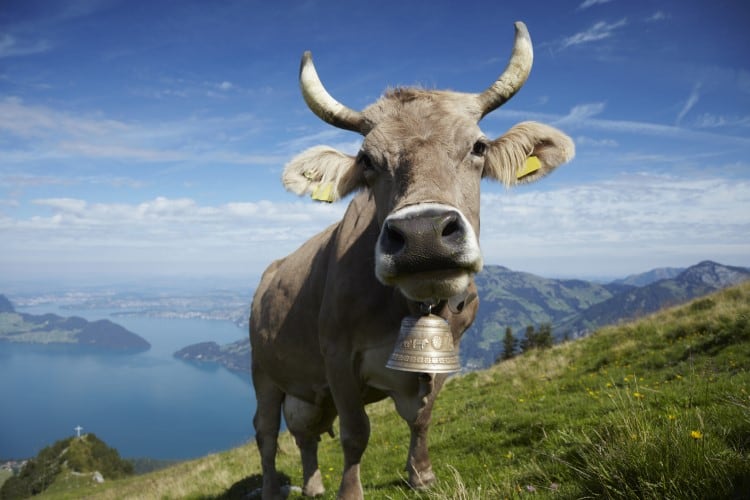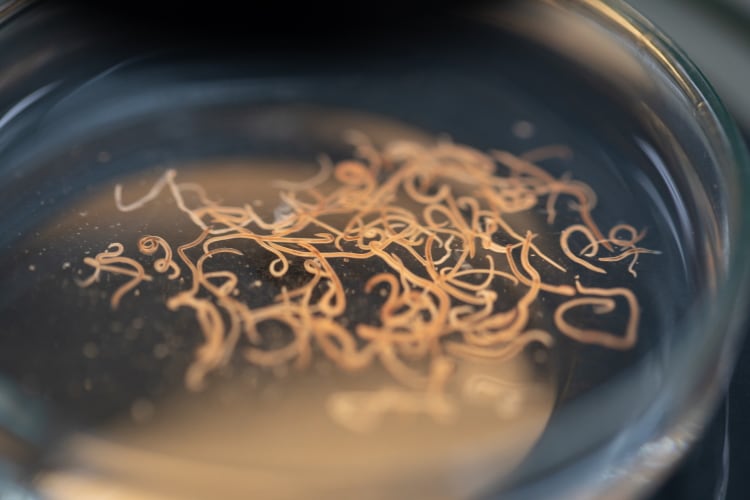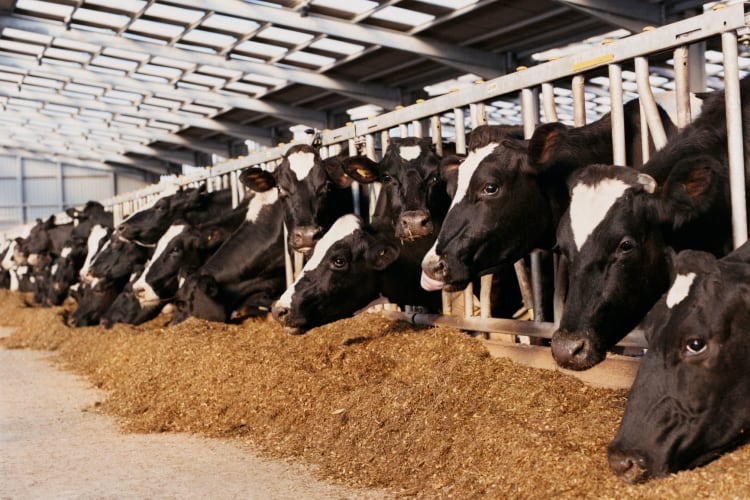The findings may not come as a surprise to advocates of the pasture-based system, but there is now more scientific proof that moving cows outdoors for at least part of the year can be beneficial for milk composition and cheese yield.
Italian researchers probed the milk of two groups of dairy cows to find out how moving the animals to pasture for three months in the summer affected the quality of the milk they produced - along with its cheesemaking properties - compared to that of their indoor-housed counterparts. Studies of this kind are few and tend to focus on udder health and the effects of pathogenic bacteria rather than the effects of milk microbiota and composition on cheesemaking properties.
The experiment, which lasted from June to October, was carried out at two farms in the Italian Alps in Europe – a permanent farm that houses cows indoors year-round, and a temporary summer highland farm where cows are kept at pasture.
Twelve Brown Swiss cows were chosen for the experiment and split into two groups of six. For the first and last month of the trial, all were kept together indoors at the permanent farm; between July and September, one of the groups was moved to the temporary farm, where cows were kept at pasture day and night. The indoor-only group was fed TMR while the grazing cows were given some supplementary feed according to milk production.
Samples were taken in each of the five months and split into two to test the bacterial content and key milk composition traits such as protein, casein, lactose, and fat, and how these affected cheese production.
Finally, the researches made full-fat ‘model cheese’ from each collected milk sample to determine any differences in yield.
More ‘good’ and less spoilage bacteria
According to the findings, the abundance of lactic acid bacteria in all milk samples didn’t vary notably during the first and last month of the trial, when all cows were kept indoors. But during July, August and September, there was a higher value of lactic acid bacteria in the milk of the outdoor-kept cows. The values of probiotics such as Lactobacillus, Propionibacterium and Bifidobacterium were also found to be higher in the milk of the cows moved to pasture during the three summer months.
The results for spoilage bacteria were more nuanced, though during the summer months, all values bar one were lower in the cows kept outdoors.
The cheese-yield factor
Using the data obtained from the milk samples, the researchers compiled six factors on milk composition and cheesemaking properties. The most important factor was cheese yield, which was characterized by the yield of cheese solids, protein and fat content and recovery of milk energy in the curd.
According to the data, the cheese-yield factor had a higher value during the summer in cows at pasture, and lower in those kept indoors. This effect was lost when the grazing cows were reunited with the other group at the permanent farm.
“We can conclude that the milk microbiota is very complex, and the majority of bacterial taxa are strongly influenced by farming system as well as by the advancement of season and lactation stage,” the researchers wrote in the paper. “Transhumance of dairy cows from indoor conditions to summer highland pastures may increase the relative abundances of [lactic acid bacteria] and other probiotic bacteria…and decrease the abundances of spoilage bacteria, thereby improving the milk in terms of cheese-making aptitude and benefits to human health.
“This effect disappears after the cows return indoors in the autumn.”
Source: Milk metagenomics and cheese-making properties as affected by indoor farming and summer highland grazing
Authors: Giovanni Bittante, et al
Published: November 15, 2022
DOI:10.3168/jds.2022-22449



